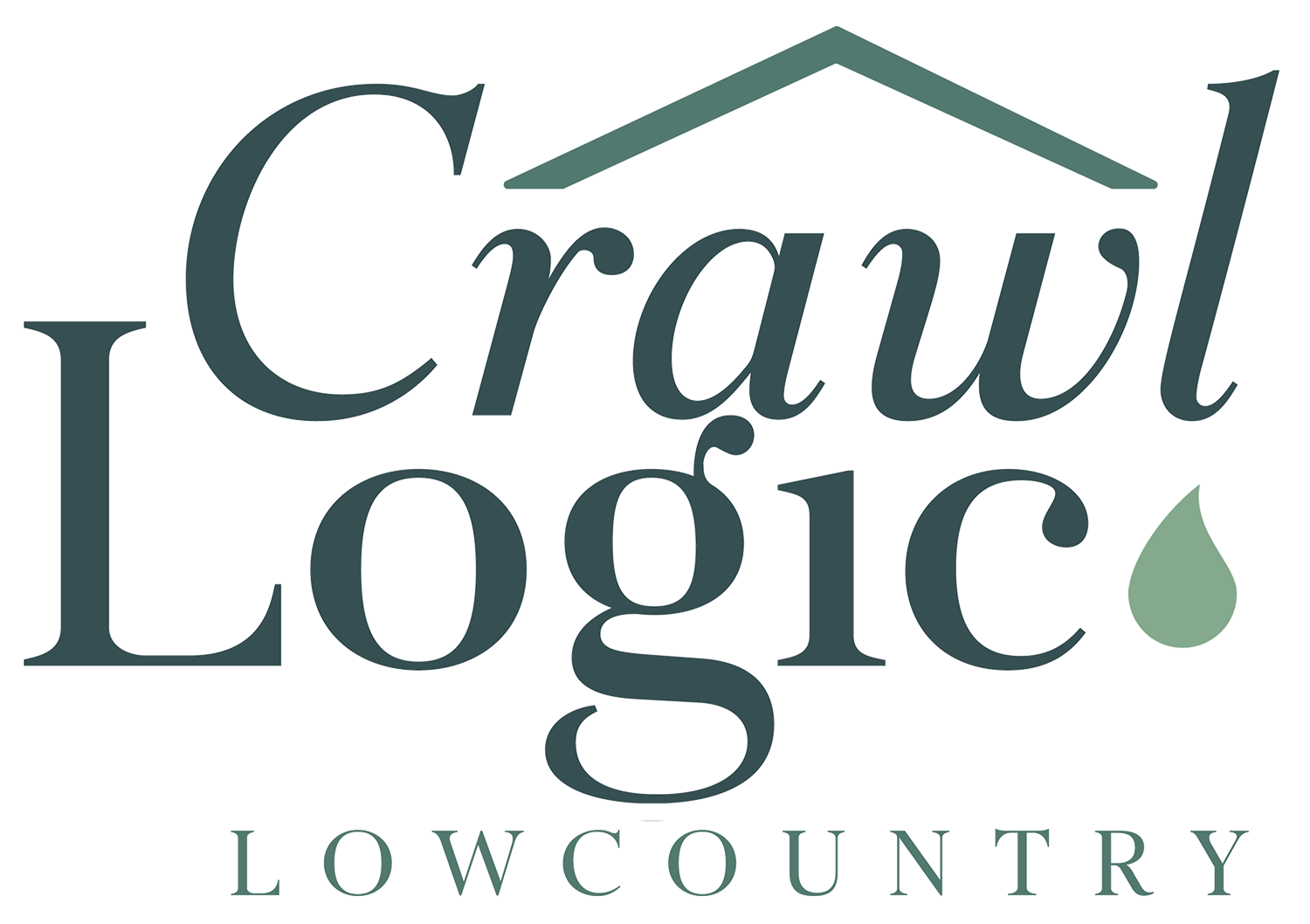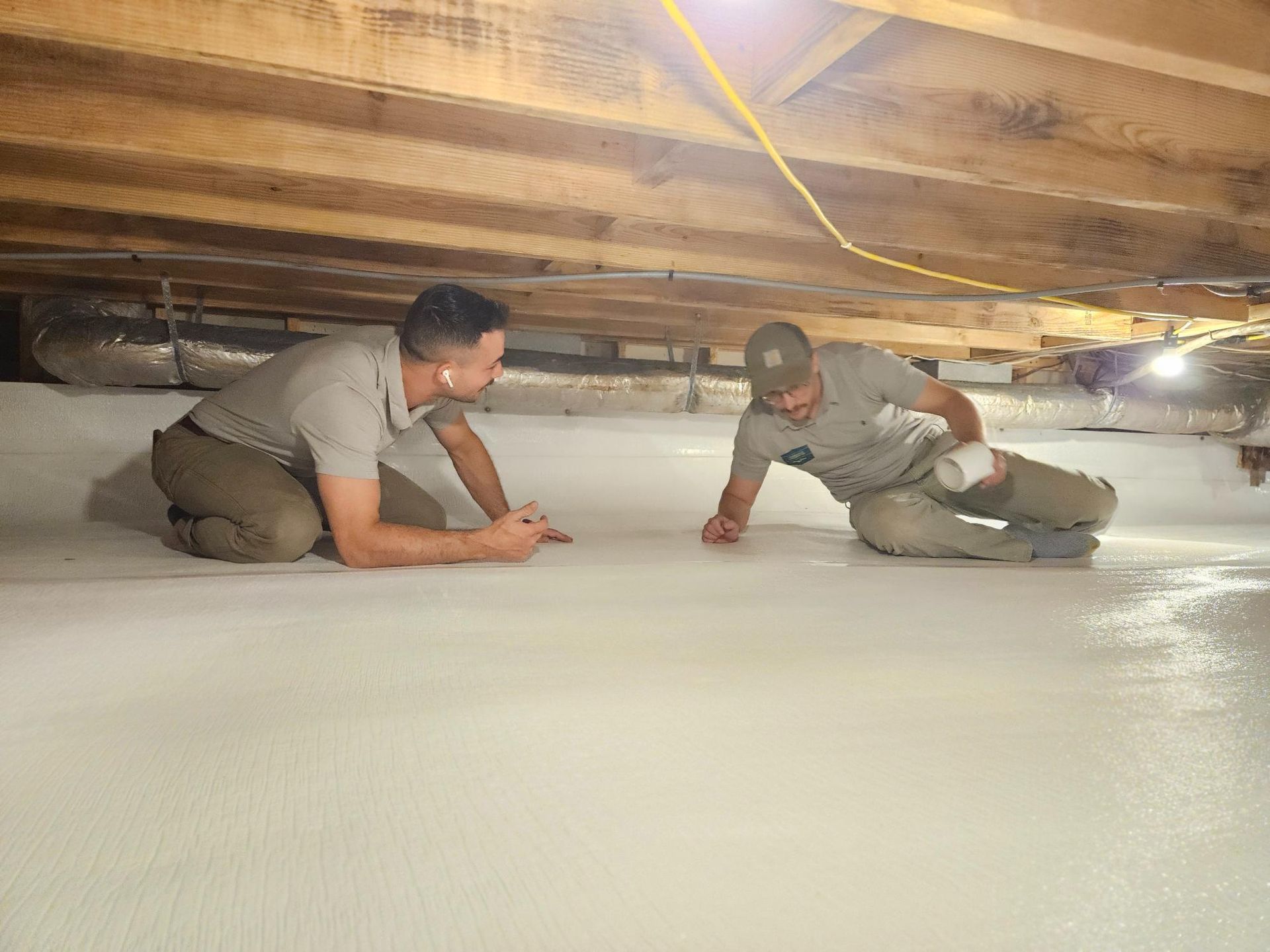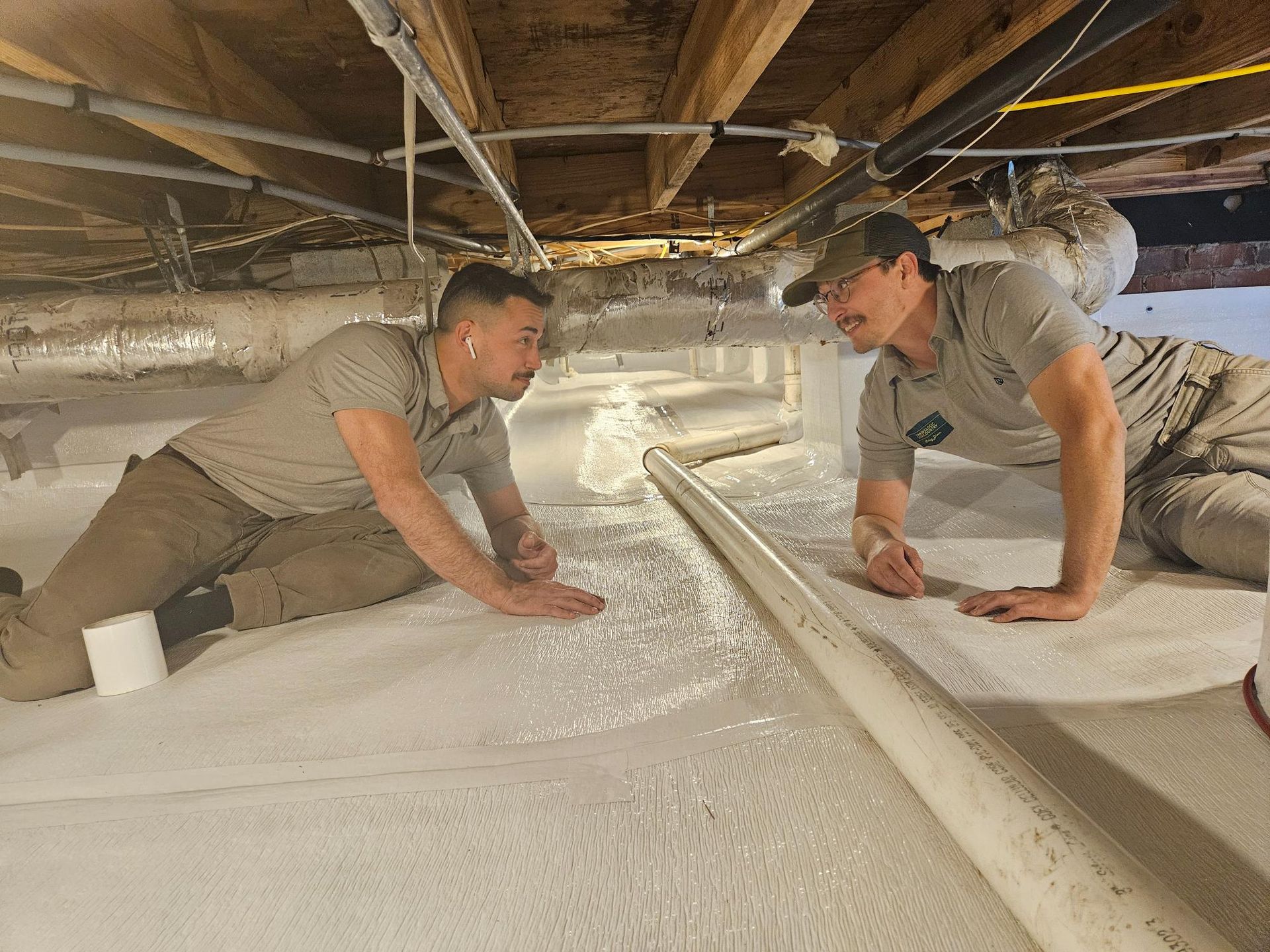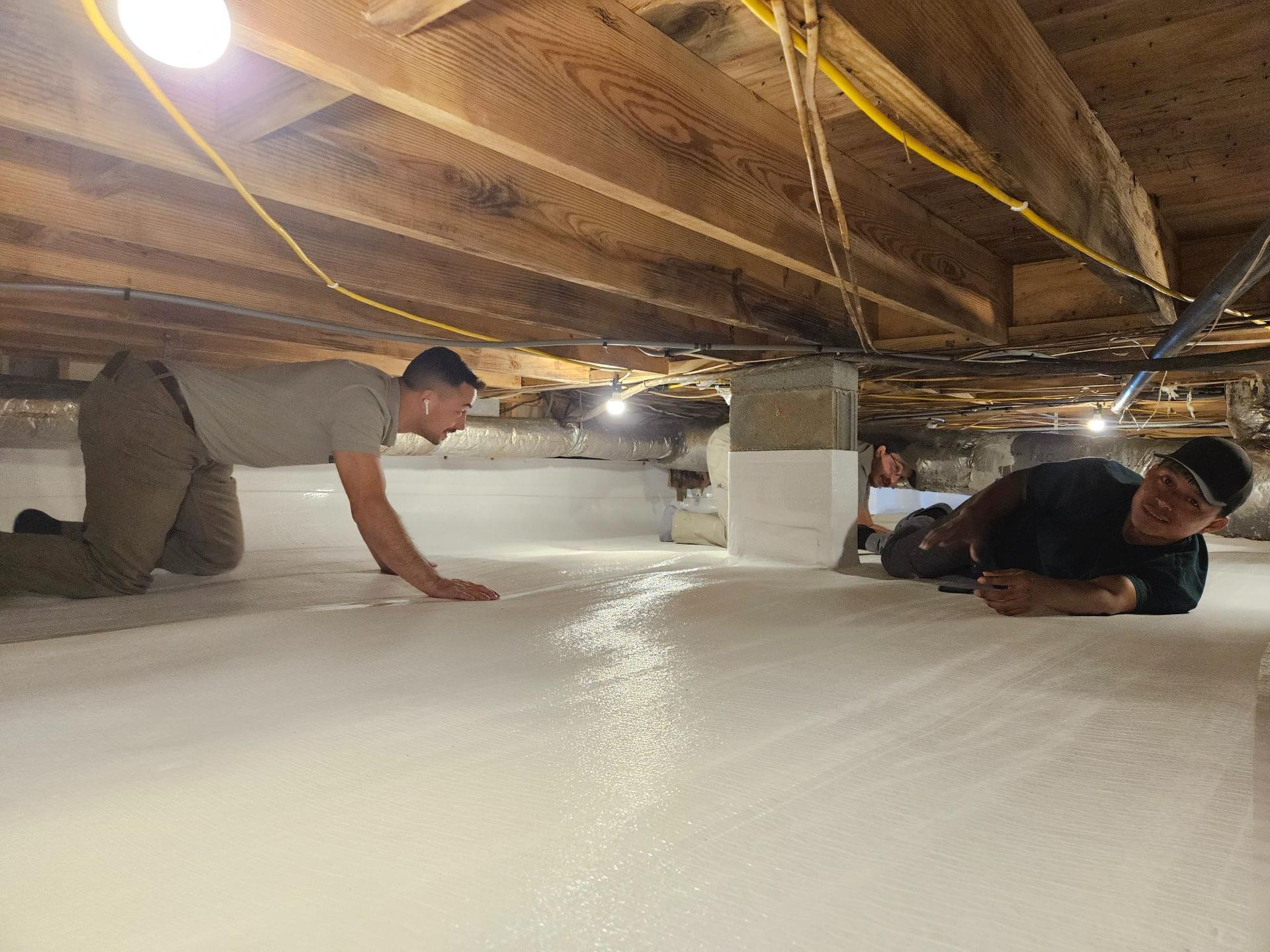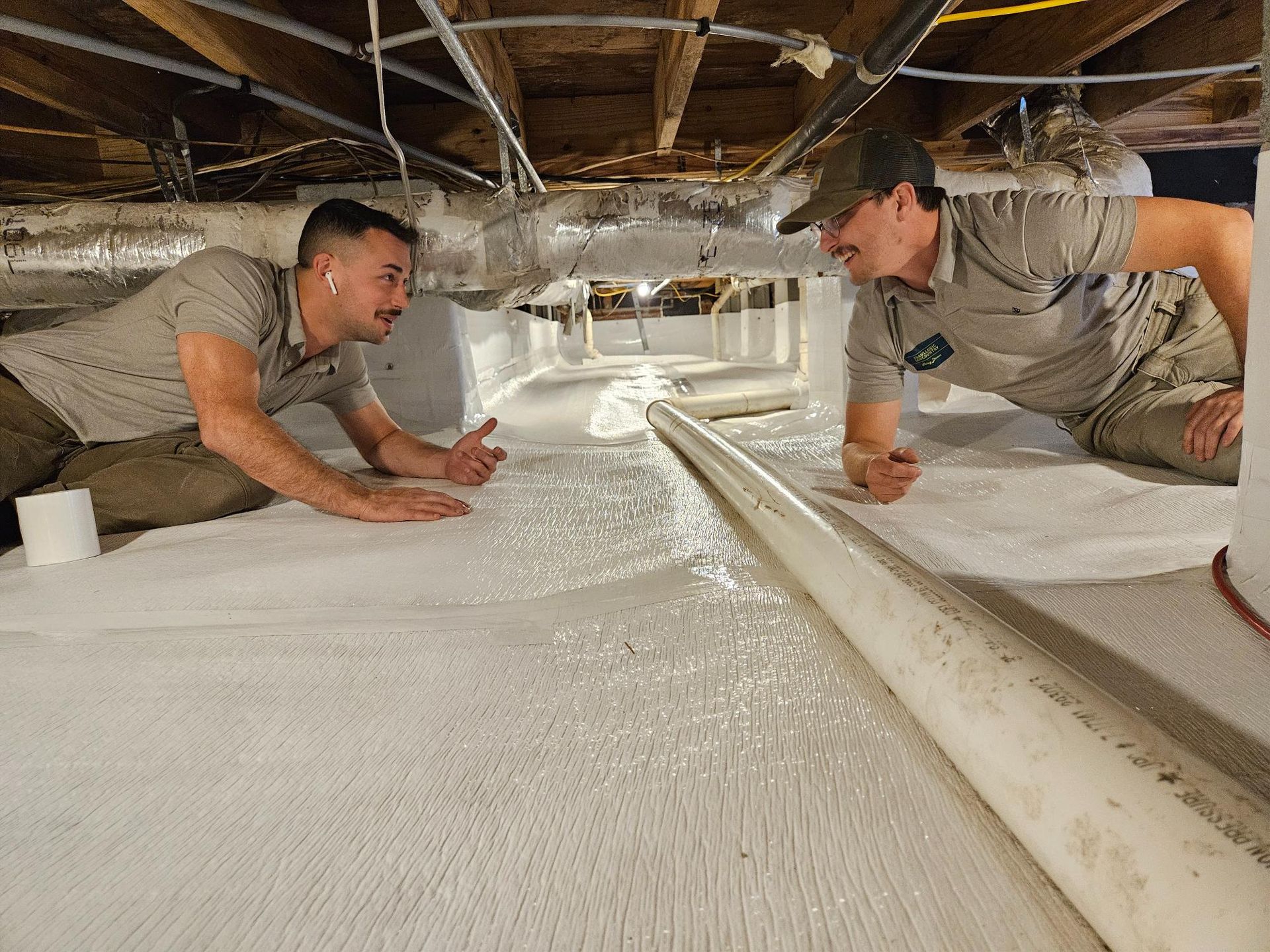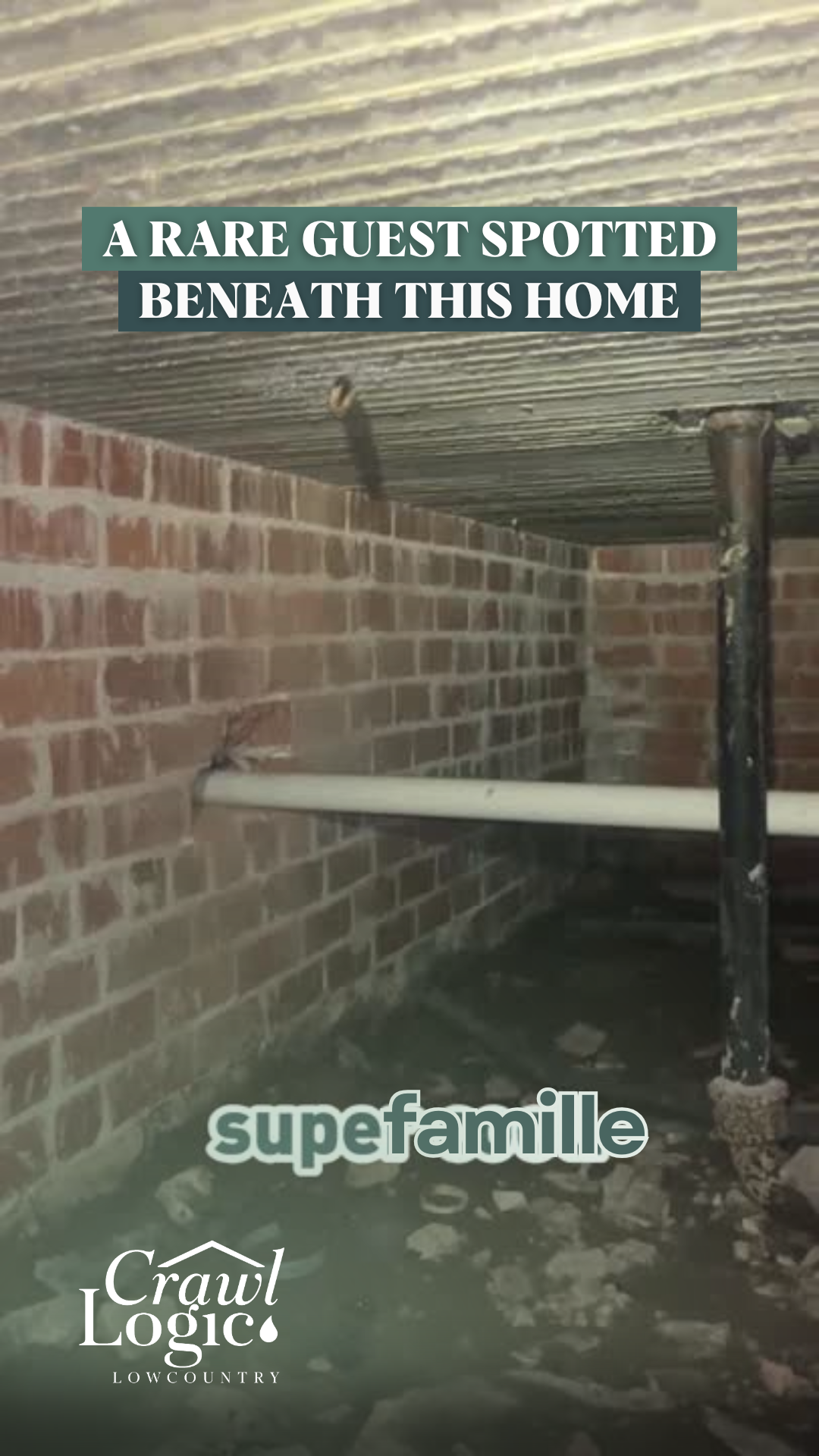The 'Standard' Way vs. The Right Way: Lowcountry Crawl Space Encapsulation
Crawl Logic Lowcountry
Common Crawl Space Mistakes
UNDERSTANDING THE IMPACTS OF POOR WORKMANSHIP
When companies talk about crawl space encapsulation in the Lowcountry, they love to throw around terms like "25-year warranty" and "guaranteed adhesion."
But here's what they don't tell you: that warranty might still be good even when their work is lying in pieces on your crawl space floor.
I just finished fixing another failed encapsulation job in Charleston.
The homeowners thought they were getting a long-term solution.
Instead, they got plastic walls that fell down, unsealed pillars that let moisture in, and a dehumidifier that couldn't keep up.
Unfortunately, this isn't unusual - we fix these issues all the time.
Welcome to Crawl Logic Lowcountry!
The 'Standard' Way
Here's what most companies do in our area:
- Stick the vapor barrier to your walls with adhesive only
- Skip the "difficult" areas like pillars and utility penetrations
- Install a dehumidifier without proper monitoring
- Leave pipe penetrations unsealed because they're "too hard"
The result? An encapsulation system that looks good on day one but can't handle our Lowcountry moisture levels. Even worse, many homeowners don't discover the problem until mold starts growing or their floors begin to warp.
Why the Standard Way Fails
When we get called to fix these failed systems, we always see the same issues. That "guaranteed" adhesive might still be sticky, but it can't stand up to real Lowcountry water flow. Without proper mechanical fasteners, even the best glue will eventually give up, leaving your vapor barrier hanging like wallpaper in an abandoned house.
Those skipped pillars and basins? They're basically humidity highways, letting moisture bypass your expensive encapsulation system entirely. And every unsealed pipe penetration is another chance for water to make its way in.
The Right Way
Here's how we handle crawl space encapsulation:
- Mechanically fasten vapor barriers to prevent falling
- Carefully wrap every pillar and basin, even the weird ones
- Seal all pipe penetrations, no exceptions
- Install monitoring systems to catch issues early
Each of these steps matters because water will always find the weak point in your system. It's not enough to just cover most of your crawl space - you need every square inch properly protected.
What Homeowners Need to Know
Watch for these warning signs of poor installation:
- Vapor barrier sagging or falling from walls
- Constant dehumidifier operation
- Musty smells from your crawl space
- Unexplained moisture on your floors
Don't be fooled by warranty paperwork. A proper encapsulation job should include mechanical fasteners, complete coverage, and real monitoring. Ask your contractor specifically how they handle water flow issues and difficult areas like pillars. If they brush off these concerns or talk only about their adhesive warranty, keep looking.
The right installation might take more time and attention to detail, but it's far less expensive than fixing a failed system - especially after water damage has already occurred.
Doing It Right The First Time
At Crawl Logic Lowcountry, we believe in doing the job right the first time. That means no shortcuts, no skipped areas, and no excuses about spots being "too hard" to properly seal. We handle every crawl space like it's our own home, because we understand what's at stake when encapsulation fails.
The difference between standard encapsulation and proper installation isn't just about materials or warranties - it's about understanding how water moves through Lowcountry crawl spaces and building systems that can stand up to our unique climate challenges.
Want to make sure your crawl space encapsulation is done right? Or concerned about an existing system? We offer thorough inspections throughout Charleston, Mount Pleasant, and the surrounding Lowcountry area. We'll show you exactly what's working, what isn't, and what needs to be done to protect your home properly.


